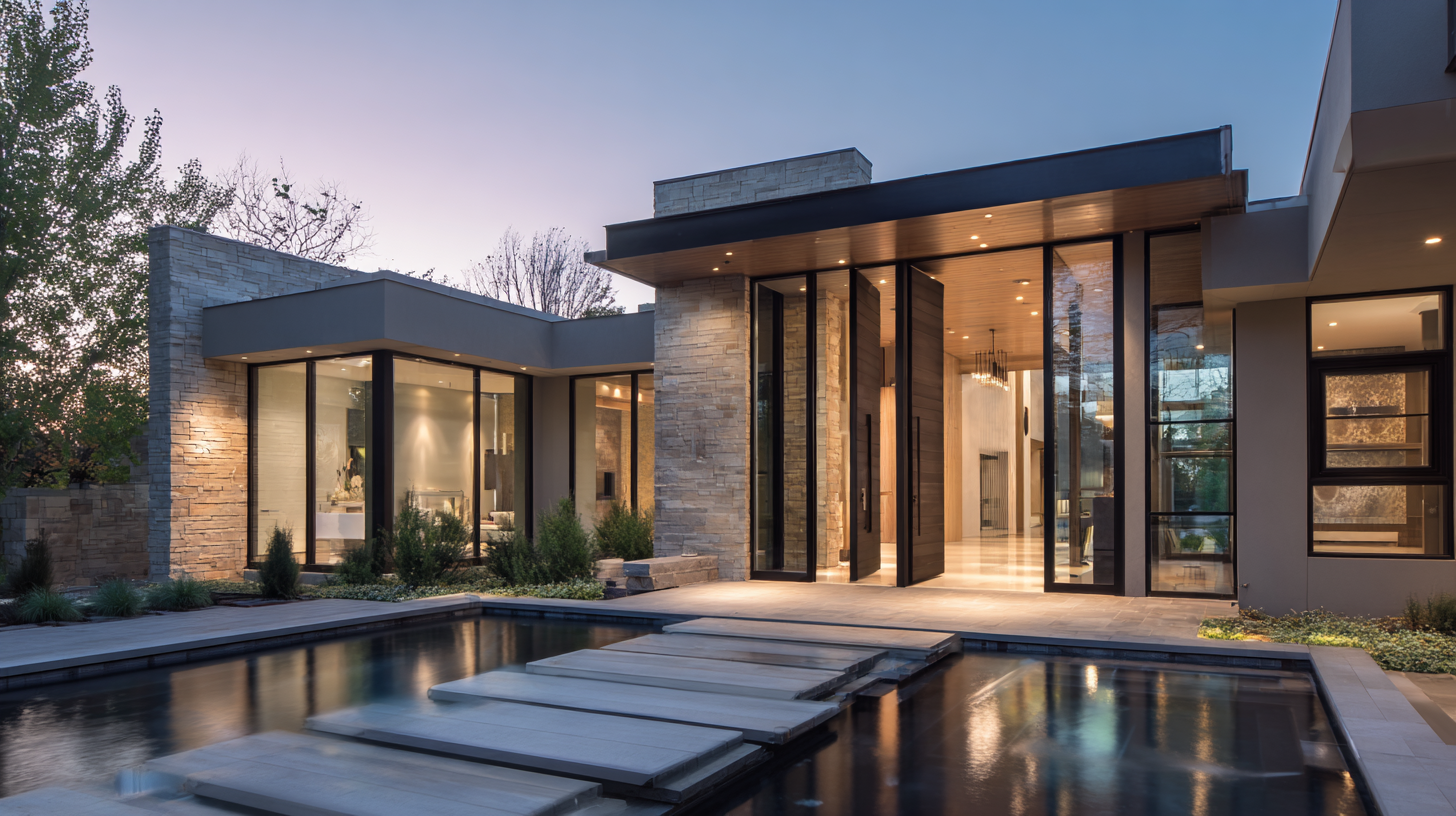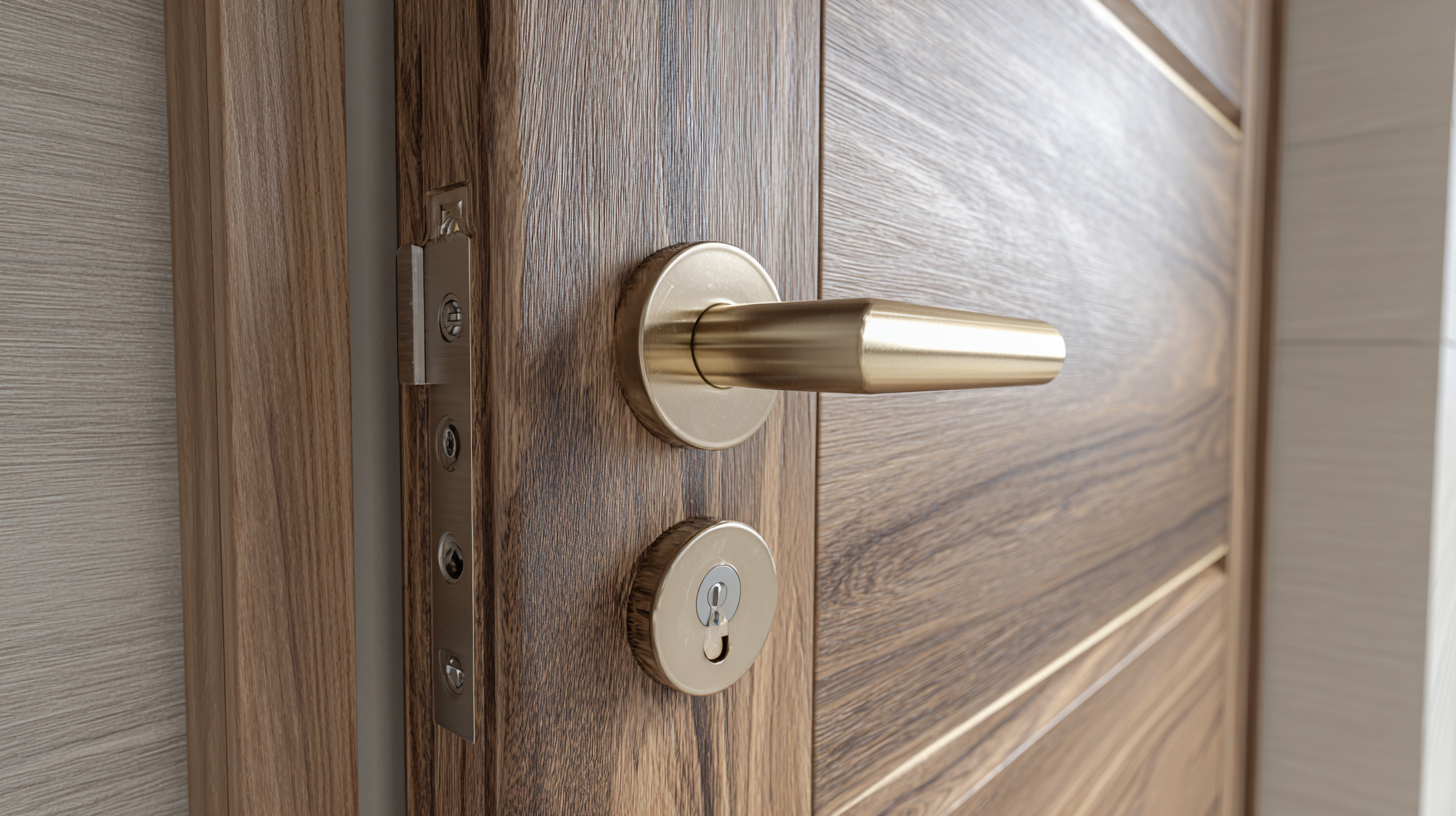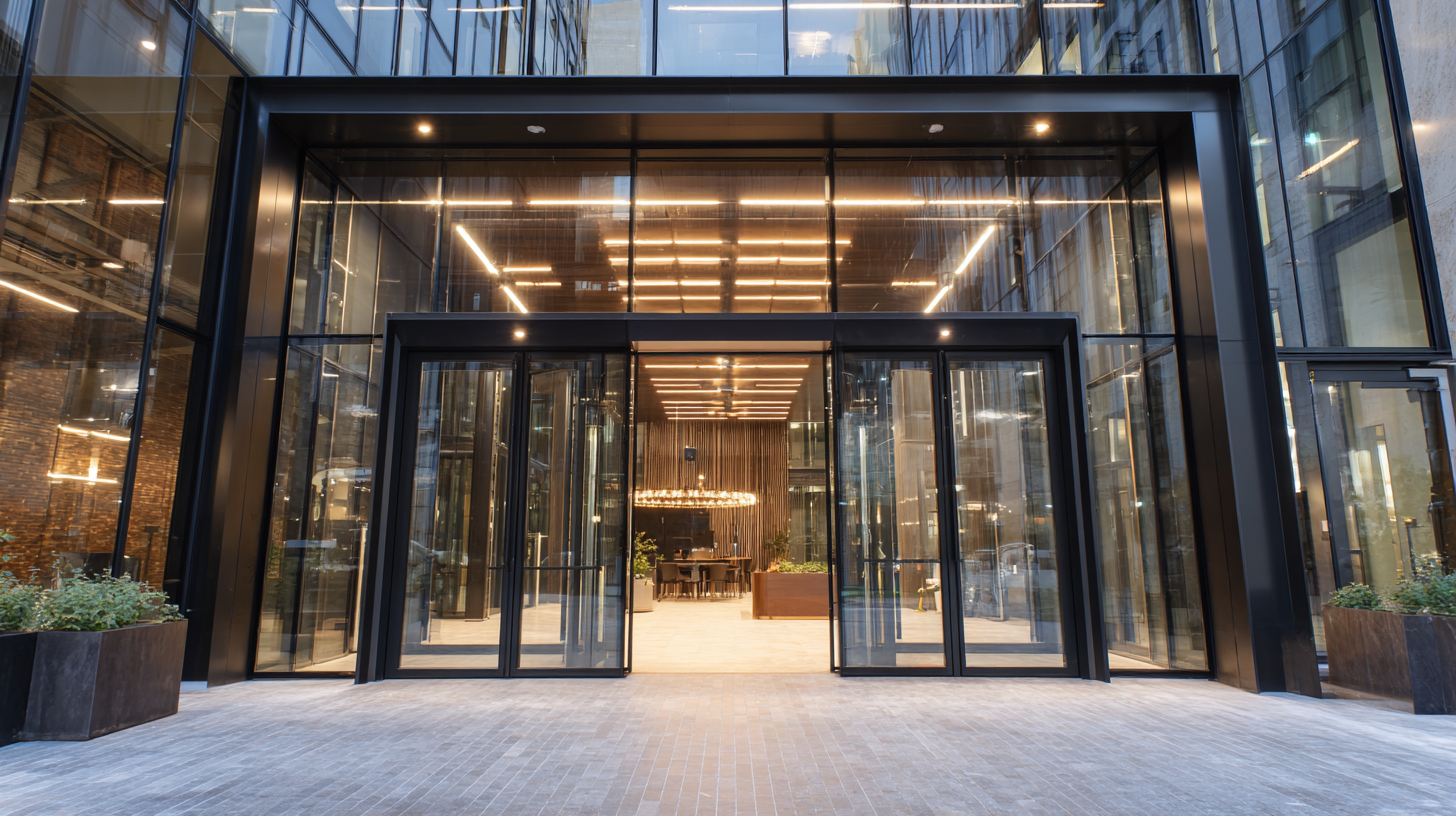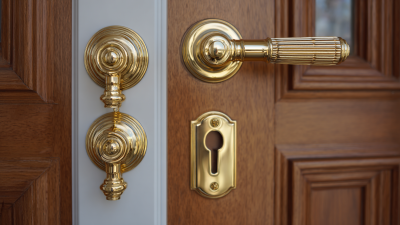Innovative Door Systems Transforming Modern Architecture and Design Trends
The evolution of door systems has become a pivotal aspect of modern architecture and design, shaping not only aesthetics but also functionality. According to a report by MarketsandMarkets, the global door systems market is projected to reach $136.21 billion by 2025, growing at a CAGR of 5.4%. This surge emphasizes the increasing importance of innovative door technologies in residential and commercial buildings.
 Designers and architects are now integrating advanced materials, automated features, and eco-efficient designs, making door systems key contributors to energy conservation and urban sustainability. As trends like biophilic design and smart home integration gain traction, the role of door systems is destined to evolve further, enhancing space utilization and accessibility while reflecting contemporary design sensibilities. This shift heralds a new era where door systems not only serve as entry points but also as statements of style and efficiency in modern architecture.
Designers and architects are now integrating advanced materials, automated features, and eco-efficient designs, making door systems key contributors to energy conservation and urban sustainability. As trends like biophilic design and smart home integration gain traction, the role of door systems is destined to evolve further, enhancing space utilization and accessibility while reflecting contemporary design sensibilities. This shift heralds a new era where door systems not only serve as entry points but also as statements of style and efficiency in modern architecture.
Emerging Trends in Innovative Door Designs for Modern Spaces
The emergence of innovative door designs is reshaping modern architecture and design trends, enhancing both aesthetics and functionality. According to the latest report by Grand View Research, the global door market is expected to reach $182 billion by 2027, driven by an increasing demand for high-quality and custom designs. Features such as smart technology integration, eco-friendly materials, and multifunctional capabilities are now at the forefront of design considerations, making doors not merely entry points but also key elements of a room's character.
One significant trend is the rising popularity of sliding and folding door systems, which offer seamless transitions between indoor and outdoor spaces. A study by the American Institute of Architects indicates that these types of doors can enhance natural light by up to 50%, boosting the overall ambiance of a home. Additionally, innovative door designs now frequently incorporate soundproofing and thermal insulation, reflecting a growing awareness of energy efficiency and comfort in modern interiors.
Tips: When selecting innovative door systems, consider the overall style of your space and aim for a cohesive look. Additionally, prioritize doors with sustainable materials and energy-efficient features to contribute to a more eco-conscious design. Lastly, don't overlook the importance of hardware; high-quality locks and handles can elevate both the function and style of your doors.
Sustainable Materials: Revolutionizing Door Systems in Architecture
As modern architecture increasingly prioritizes sustainability, door systems have emerged as essential components reflecting this trend. Innovative designs now incorporate sustainable materials, which not only enhance the aesthetic appeal of buildings but also minimize environmental impact. From reclaimed wood to recycled aluminum and bamboo, these materials are reshaping how door systems are constructed, offering both durability and a lower carbon footprint. Architects and designers are now more empowered to create functional spaces that align with eco-friendly values, providing a new layer of depth to modern architecture.
Tips for Choosing Sustainable Door Systems:
2. Consider Energy Efficiency: Look for door systems that are designed with insulation properties to improve energy conservation, helping to maintain comfortable indoor climates while lowering energy bills.
3. Check for Certifications: Seek out manufacturers that provide certifications for sustainable practices and materials, ensuring that your choice contributes to a healthier environment.
The integration of sustainable materials in door systems showcases a commitment to responsible design that meets contemporary architecture's functional and aesthetic needs, paving the way for future innovations.

Smart Technology Integration in Modern Door Solutions
The integration of smart technology into modern door solutions is revolutionizing the way we approach architecture and interior design. Contemporary door systems are no longer just entry points; they have evolved into multifunctional elements that enhance security, convenience, and aesthetic appeal. Features such as biometric locks, smart hinges, and integrated lighting are becoming standard, allowing homeowners to control access with their smartphones and maintain seamless connectivity throughout their homes.
Tip: When choosing smart door systems, consider compatibility with existing home automation platforms to ensure a smooth integration process.
Moreover, these innovative door solutions are designed with sustainability in mind. Many modern doors are now crafted from eco-friendly materials and equipped with energy-efficient technologies. This shift not only contributes to reducing a building's carbon footprint but also aligns with the growing demand for sustainable living practices. Homeowners can enjoy the benefits of advanced security features while making environmentally conscious choices.
Tip: Look for doors that offer insulation benefits to improve energy efficiency and reduce your heating and cooling costs over time.
Minimalism vs. Maximalism: The Dual Aesthetic of Innovative Door Systems
In the realm of modern architecture, the clash between minimalism and maximalism extends beyond mere interior design to influential elements like door systems. Minimalism advocates for clean lines and simplicity, reflecting a desire for functional elegance. Innovative door systems, characterized by streamlined designs and subdued color palettes, enhance this aesthetic by blending seamlessly with their surroundings. These doors often feature large glass panels and hidden frames, creating an almost ethereal transition between indoor and outdoor spaces, emphasizing light and open air.
Conversely, maximalism celebrates boldness and richness, encouraging designers to explore textures, colors, and patterns in innovative door systems. Here, doors become statement pieces, showcasing intricate craftsmanship and vibrant finishes. The juxtaposition of ornate carvings or mixed materials adds depth and character, transforming entryways into focal points of a home. This dual approach not only enriches architectural expression but also allows homeowners to reflect their unique tastes through the gateway of innovative door systems, bridging the gap between minimalism's restraint and maximalism's exuberance.

Architectural Impact: How Unique Door Designs Transform Building Facades
Unique door designs play a crucial role in transforming building facades, serving not only as functional entry points but also as pivotal aesthetic elements. Architects are increasingly experimenting with unconventional materials, shapes, and colors, creating doors that stand out and redefine the visual landscape of buildings. For instance, oversized pivot doors or folding glass doors can bring a sense of spaciousness and connectivity to indoor and outdoor areas, significantly enhancing the facade's appeal. These inventive approaches not only attract attention but also reflect the distinct character and vision of the architect.
Furthermore, the integration of smart technology into door design adds another layer of innovation. Automated and sensor-based doors offer seamless entry while contributing to energy efficiency and security. Moreover, unique door designs can embody cultural narratives or historical references, grounding modern structures in local context while still pushing the boundaries of architectural expression. As architects prioritize both functionality and visual impact, it is evident that innovative door systems are revolutionizing the way we perceive and experience modern architecture.
Innovative Door Systems Transforming Modern Architecture and Design Trends
| Design Type | Material | Energy Efficiency Rating | Security Features | Architectural Style |
|---|---|---|---|---|
| Sliding Glass Door | Tempered Glass | A+ | Multi-point Lock System | Modern |
| Pivot Door | Wood | A | Smart Lock Technology | Contemporary |
| Bi-Fold Door | Aluminum | A++ | Reinforced Frame | Minimalist |
| Dutch Door | Wood | B | Traditional Locking Mechanism | Rustic |
| Accordion Door | Vinyl | C | Basic Lock System | Traditional |
Related Posts
-

How to Choose Entry Door Hardware That Enhances Security and Style
-

Ultimate Guide to Choosing the Perfect Store Front Glass Door for Your Business
-

How to Choose the Perfect House Doors for Your Home Design Needs
-

What is the Significance of Store Front Glass Doors in Modern Retail设计
-

Choosing the Right Entry Door Hardware for Enhanced Home Security and Style
-

How to Choose All Glass Solutions for Maximum Energy Efficiency in Modern Construction
